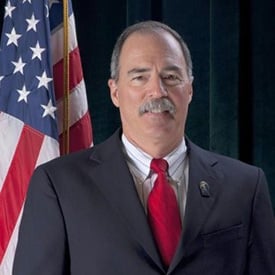
Benchmarking a fire department against its peers is an essential tool in measuring that department’s ability to deliver services to the community. The analysis can help inform strategic planning, budget requests, staffing decisions, equipment purchases, training needs, and more. However, many communities aren’t equipped to make these analyses on their own, because they consume valuable time and limited resources. Recently, Emergency Services Consulting International (ESCI), the consulting arm of the International Association of Fire Chiefs (IAFC), teamed with ISO to produce the Community Fire Service Performance Review for Structural Fire Protection, a peer-review benchmark analysis that fire departments and municipalities can use to make those comparisons.
ISO has more than 40 years of experience performing field surveys to collect key performance indicators on fire department capabilities. ESCI has reliably met the needs of emergency services agencies for more than 40 years and is a national leader in fire, EMS, communications, and law enforcement consulting.
Community Fire Protection News spoke with Stuart McElhaney, ESCI’s eastern regional director, about the importance of benchmarking. McElhaney has a long history with the fire service and was a county fire chief for many years. His insights into this issue are invaluable.
Community Fire Protection News (CFP): Describe ESCI’s role in the benchmarking report program.
Director McElhaney: ESCI staffers working in the benchmarking program are all experienced current or former fire chiefs who understand the link between improved fire department service levels, Public Protection Classification (PPC®) ratings, and annual fire insurance costs. Our staff synthesizes local community and benchmark data collected by ISO and develops realistic, prioritized recommendations for improvements that a community can make to fire departments, water supply systems, communications, and community risk reduction programs. Those efforts can help improve service levels and have a direct, positive effect on the PPC rating. Recommendations are prioritized based on financial impact to the local jurisdiction, which helps elected officials, administrators, and fire department staff develop financially sustainable public safety policies.
CFP: What are the benefits of benchmarking to fire departments?
McElhaney: Fire departments can use the benchmark report as a pre–ISO evaluation tool. Our staff will discuss the report with the fire department and community, outlining changes made since the last ISO evaluation. Those changes and detailed observations will help create the prioritized recommendations for improving the PPC score on the next evaluation. ESCI staffers work hand in hand with the department to identify areas with the highest potential PPC point totals obtainable at the lowest cost. The process assists even the most knowledgeable departments in improving their chances for a better PPC rating in the next evaluation. By benchmarking against peer departments, the fire department can often justify to administrators and elected officials how additional investment in the department can improve the PPC rating—helping to reduce annual fire insurance premiums for the public they serve.
CFP: Why should communities employ benchmarking programs?
McElhaney: Benchmarking provides communities with a yardstick to compare their level of public safety efforts against similar communities. Favorable comparisons can have benefits, such as attracting new business and residential construction. They can also boost tourism by showing that the community may provide a higher level of safety over another.
CFP: How does benchmarking help future service delivery?
McElhaney: While setting service delivery performance standards is always a decision for local elected officials, benchmarking against the large number of similarly sized communities in our reports lets elected officials see what other communities are doing. They can assure the public that they’re making prudent decisions about public safety with respect to peer communities. If the community is significantly behind peers in various areas, the benchmarking report can provide officials with the data they need to show that greater support is needed.
